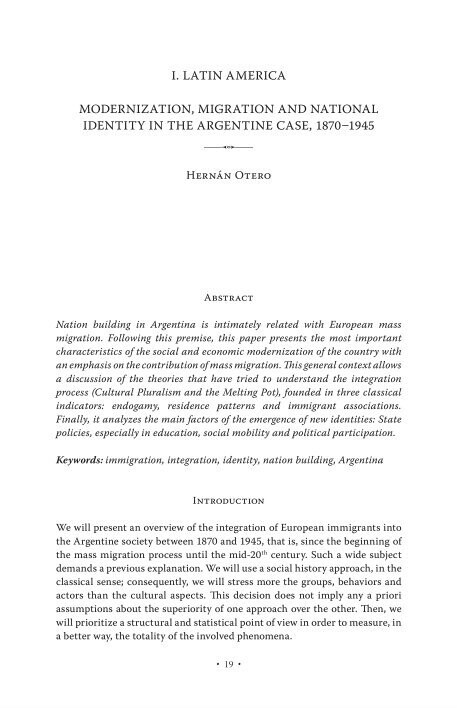OCR
I. LATIN AMERICA MODERNIZATION, MIGRATION AND NATIONAL IDENTITY IN THE ARGENTINE CASE, 1870-1945 —o HERNAN OTERO ABSTRACT Nation building in Argentina is intimately related with European mass migration. Following this premise, this paper presents the most important characteristics of the social and economic modernization of the country with an emphasis on the contribution of mass migration. This general context allows a discussion of the theories that have tried to understand the integration process (Cultural Pluralism and the Melting Pot), founded in three classical indicators: endogamy, residence patterns and immigrant associations. Finally, it analyzes the main factors of the emergence of new identities: State policies, especially in education, social mobility and political participation. Keywords: immigration, integration, identity, nation building, Argentina INTRODUCTION We will present an overview of the integration of European immigrants into the Argentine society between 1870 and 1945, that is, since the beginning of the mass migration process until the mid-20" century. Such a wide subject demands a previous explanation. We will use a social history approach, in the classical sense; consequently, we will stress more the groups, behaviors and actors than the cultural aspects. This decision does not imply any a priori assumptions about the superiority of one approach over the other. Then, we will prioritize a structural and statistical point of view in order to measure, in a better way, the totality of the involved phenomena. + 19 +

